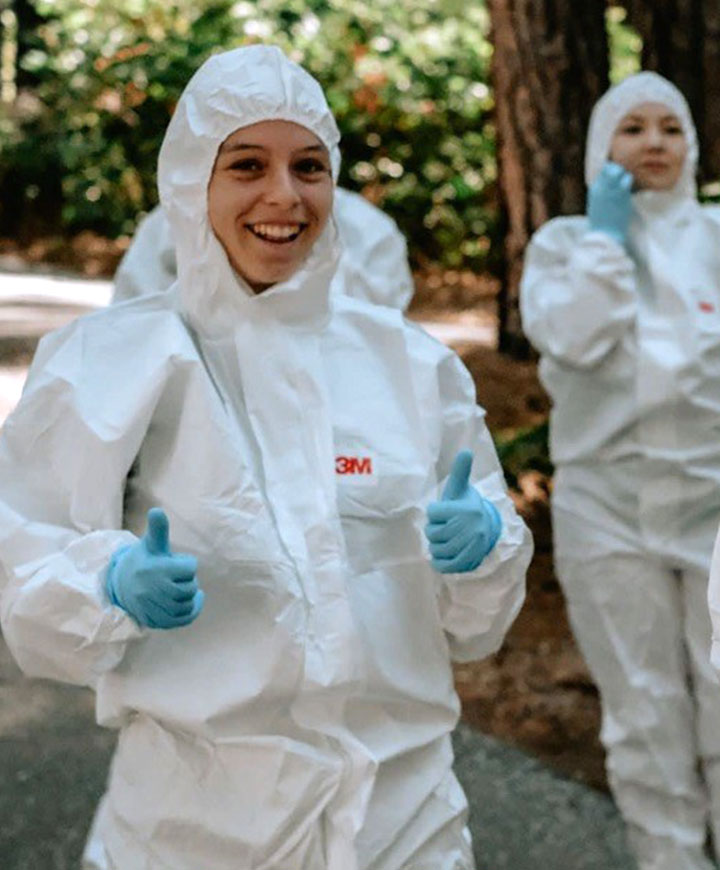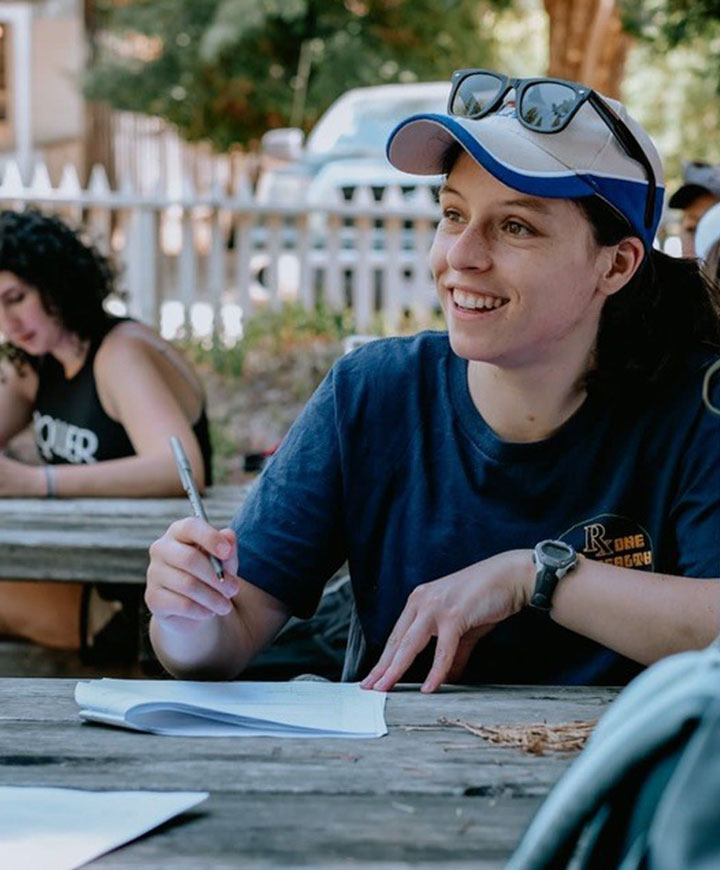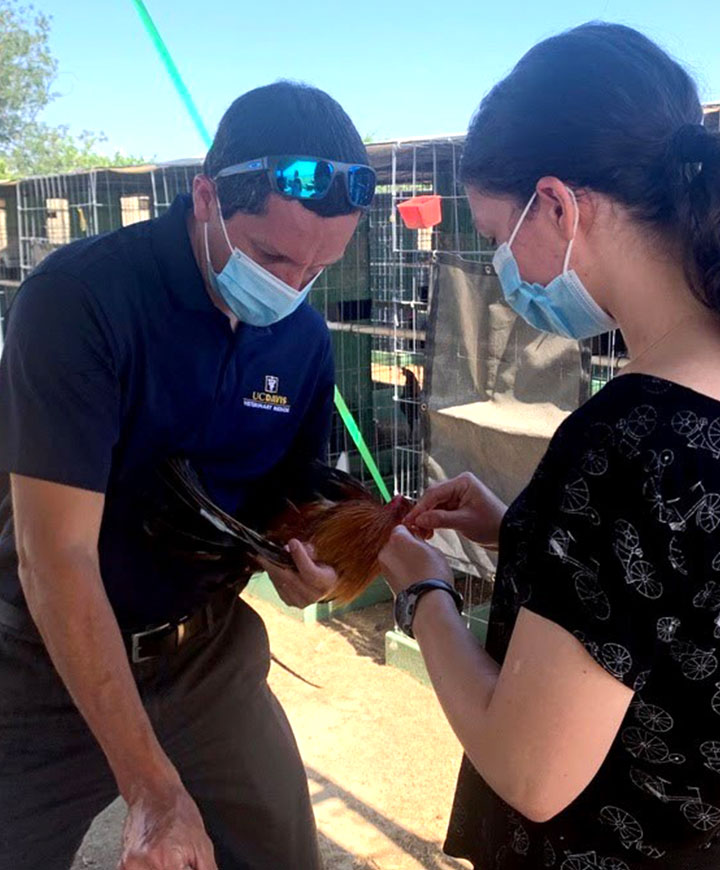Melissa Thurston – California
My original Global Programs project involved traveling to Tanzania where I planned to assist in research designed to track the prevalence of various strains of Newcastle Disease in poultry at local markets. Unfortunately, due to the COVID-19 pandemic, I was unable to travel to Tanzania and instead I focused on a Newcastle Disease outbreak closer to home. Back in 2018 there was an outbreak of Newcastle Disease Virus in Ontario, California. The virus spread through backyard gamefowl flocks and commercial poultry facilities. In order to try and prevent future outbreaks from occurring, my mentor, Dr. Rodrigo Gallardo and the rest of the California Avian Health Education Network (CAHEN) group created a program that both screens chickens for diseases and educates backyard poultry owners about different management practices. The initiative is called the Gamefowl Wellness Program.
This past summer I provided feedback on the educational materials created for backyard poultry owners and traveled to Ontario in order to assist with the outreach and viral screening efforts. Local USDA and CDFA members arranged outreach opportunities at local feed stores that sold gamefowl feed. At these stores, we approached local community members who owned poultry and educated them about the Gamefowl Wellness Program. We encouraged gamefowl owners to sign up for the program which includes free disease screening, Newcastle Disease vaccines, and management advice.
In addition to outreach at feed stores, we also visited gamefowl breeders who had previously signed up for the program. The team was able to assess the breeders’ properties, provide advice on management strategies, and collect blood samples from the birds. These samples were then taken to the CDFA lab in San Bernardino to be analyzed for antibodies to diseases such as Newcastle Disease, Avian Influenza, and Merkes Disease. The goal is to use the baseline samples we collected to track disease prevalence in populations over time and to determine efficacy of vaccination programs. By showing owners how to collect blood samples properly from the ulnar veins of their birds, we hope to have them collect the samples themselves in the future and send them in so that vaccine efficacy can be monitored.
This unique experience not only provided me with the opportunity to gain hands-on experience working with poultry, but it also introduced me to the process of creating disease screening programs. I also learned about how important it is to work with community and local leaders in order to gain their trust when establishing a new program.
After completing my trip to Ontario, I returned to Davis where I took part in a two-week-long course called Rx One Health. Our cohort consisted of veterinarian students, medical students, and PhD students who were all interested in incorporating One Health into their future careers. Our journey began with lessons about the overarching idea of One Health and its major components: animals, people, and the environment. We then discussed the concept of stakeholders and the importance of working with members of the community when conducting outreach or when trying to enact new policies.
In order to put what we were learning into practice, we traveled throughout California, exploring the varying ecosystems the state has to offer. Starting in Davis, we learned about the local bat colonies that live under the Yolo Bypass and discussed their potential role as vectors for disease. We learned about the importance of human-wildlife interfaces and the potential for the spillover of zoonotic diseases to people. With that and the recent COVID-19 outbreak in mind, we learned about the importance of sample collection and proper PPE.
Next, we set out for the Sierras where we learned how, in the past, mercury was used in the mining of gold and that this residual mercury is still causing issues today. Currently, river flow rates and sedimentation levels are used to try and approximate the amount of mercury that is flowing into local rivers where it is bioaccumulating in the fish that people are consuming. As a cohort, we discussed potential strategies for how to remove mercury from the water.
After leaving the Sierras, we traveled to the farmlands of California. We were introduced to a program called ALBA (Agriculture and land-Based Training Association) which teaches low-income field workers how to establish their own organic farms and businesses. This wonderful program not only gives back to the earth but also provides field workers the opportunity to make a living in the farming industry in a sustainable way.
From land to sea, we then went to Monterey Bay in order to learn about the marine wildlife of that region. Here, we were taught about diseases such as Toxoplasma and a variety of pollutants that accumulate in the ocean and cause harm to its sea life. Sea otters are one of the species that are most heavily affected by this issue.
For our final stop, we traveled out to Hastings Natural Reserve. In addition to taking in the beautiful natural scenery, we learned about the native Esselen tribe that used to live on the land and how the reserve is actively working to reconnect with this tribe.To tie all that we had learned together, we created a policy brief for our Capstone project. In this brief, my group focused on bringing awareness to oak tree conservation in Hastings while also considering all of the stakeholder groups involved, including the local indigenous Esselen tribe that used to live on the land. Completing this project taught me the importance of considering all parties involved in any policy or decision making. This trip made me more aware of the value and importance of incorporating One Health concepts into my future career goals no matter what career I end up pursuing.



